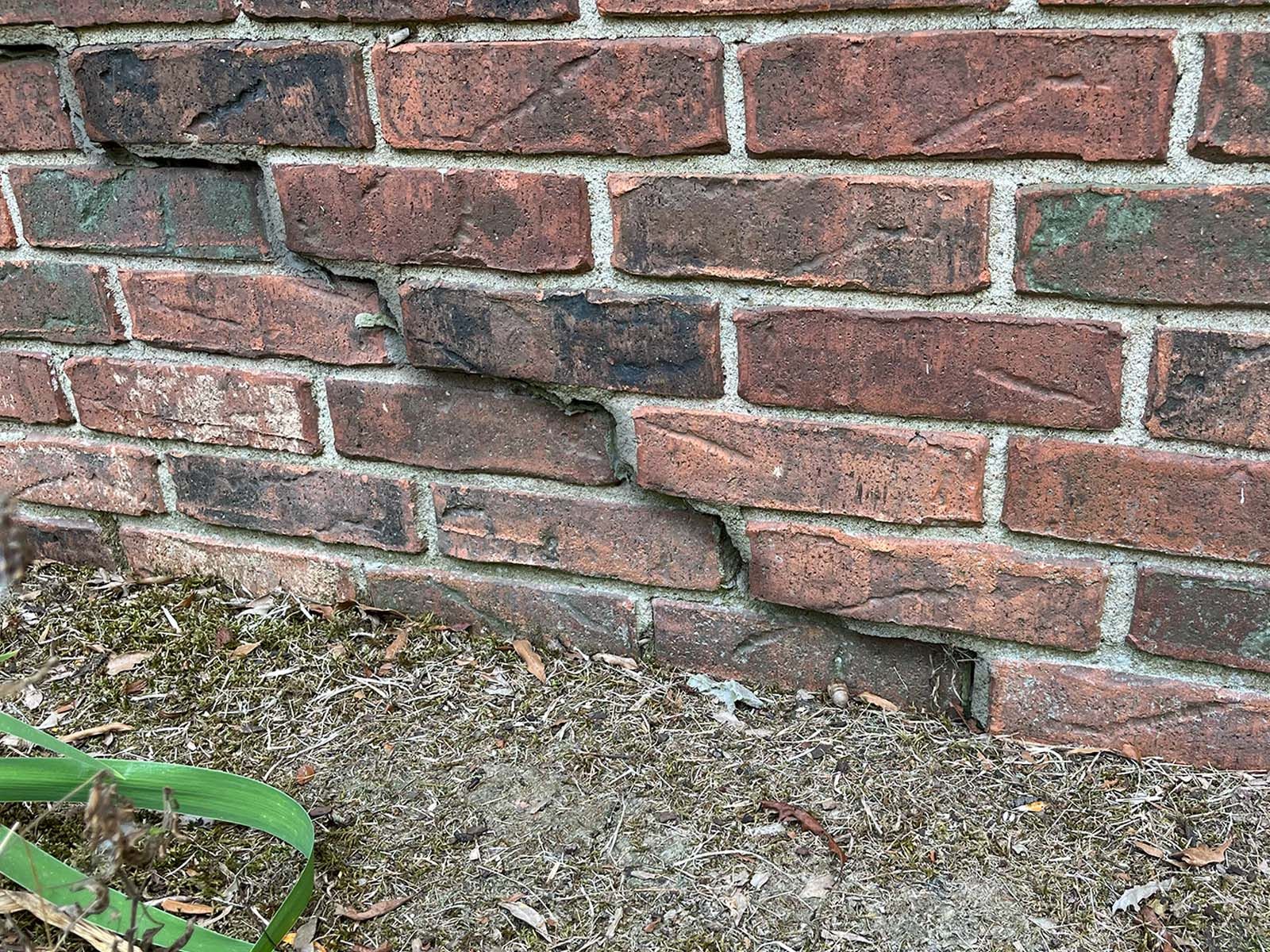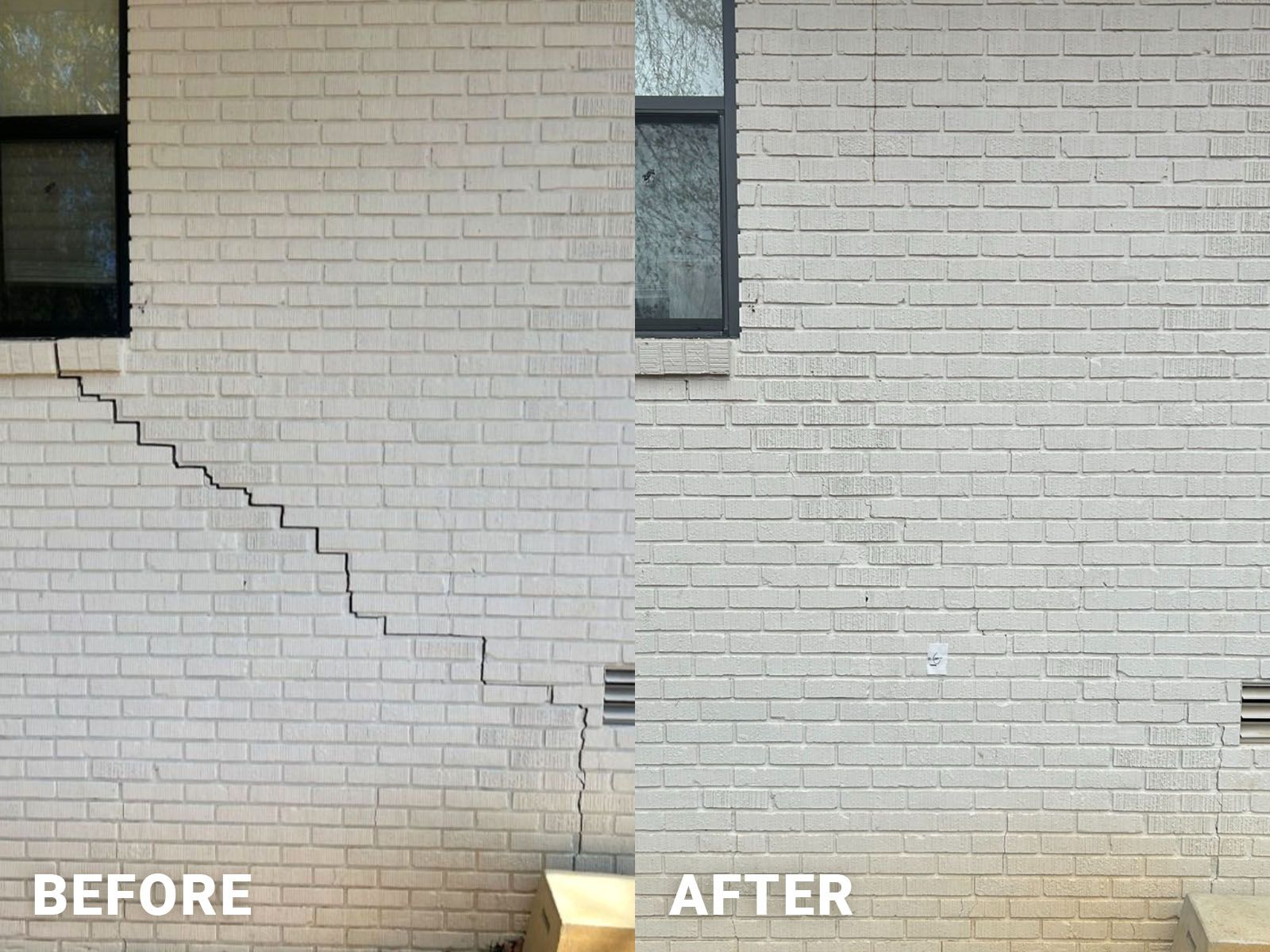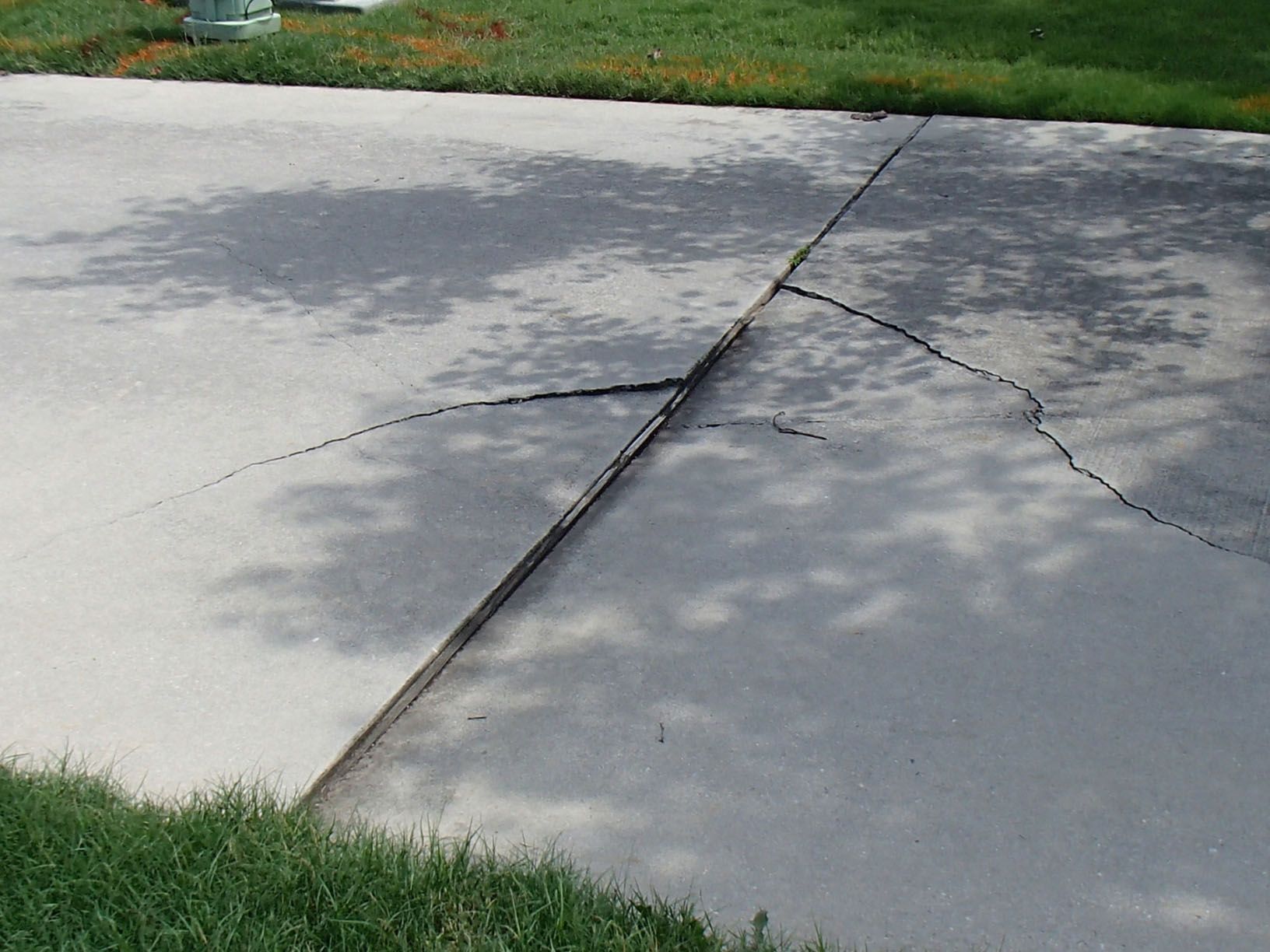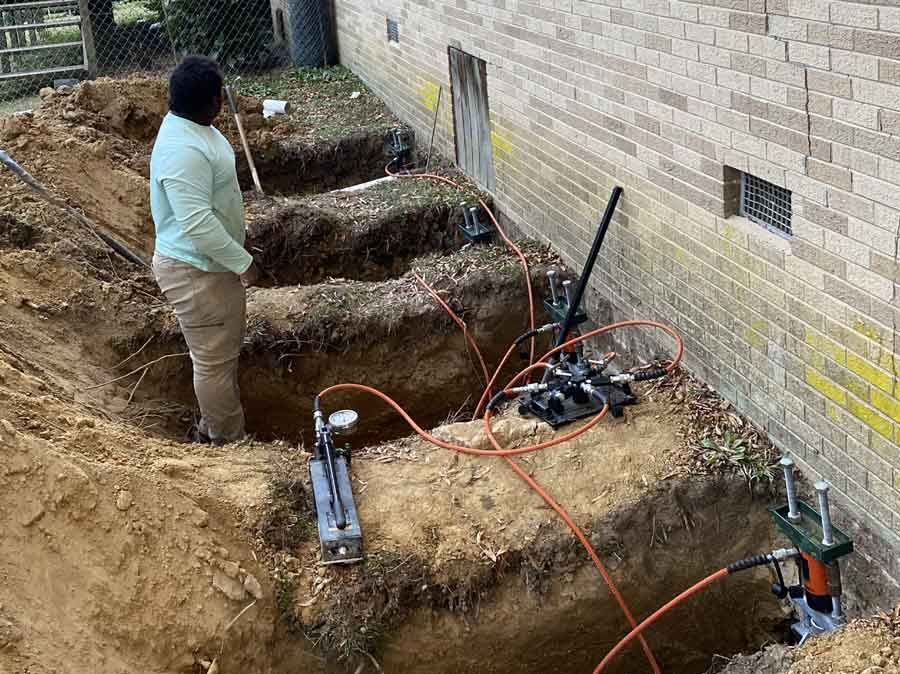Should I Buy a House with Foundation Problems?
Buying a home is an exciting milestone, but it can quickly turn stressful when the home inspection report reveals three dreaded words: Foundation issues discovered. If you’re navigating foundation problems during the home-buying process, don’t panic. While structural issues are serious, they don’t always signal the end of your real estate journey.
Foundation problems in home buying can often be addressed with the right approach and a clear understanding of their impact on your investment. In some cases, real estate foundation repair can resolve these concerns, allowing you to move forward with confidence. The key is knowing which structural issues require attention and how they may affect property value or resale potential.
This guide will help you understand what to expect when buying a house with foundation issues, offering insights into repairs and how to make informed decisions throughout the process.
What Are Foundation Issues?
A house’s foundation is one of its most critical structural elements. It ensures stability, keeps the home level, and protects it from water damage and shifting soils. However, when foundation issues arise, the entire structure can be at risk. Knowing how to assess foundation issues is essential for maintaining a safe and stable home.
Warning Signs of Foundation Issues:
- Cracks in the foundation, walls, or ceilings – Be on the lookout for horizontal cracks or stair-step patterns in bricks, as these are common signs of foundation issues.
- Uneven or sloping floors – Foundation movement often leads to floors that are no longer level.
- Sticking windows or doors – Frames that don’t open or close properly may hint at foundation shifting.
- Water damage in crawl spaces or basements – Often caused by drainage issues, moisture buildup can weaken the foundation over time.
- Bowing basement walls – This can indicate significant lateral pressure affecting the foundation’s integrity.
If you notice any of these warning signs, it’s crucial to carefully evaluate the extent of the damage. Addressing drainage issues and cracks in the foundation early can save you from costly repairs down the line. Whether you’re inspecting a home to buy or maintaining your current property, understanding the signs of foundation issues can help you make informed decisions.
Types of Foundation Problems
To fully evaluate a home with foundation issues, it’s helpful to understand the types of problems that can occur.
- Settling or Sinking: Over time, foundations may sink due to shifting soils beneath them. This can lead to cracks and structural imbalances. While common, it must be addressed quickly.
- Heaving: This occurs when the foundation is pushed upwards by expanding soil, often due to seasonal moisture changes.
- Lateral Pressure: When soil or water outside the foundation places external force on the walls, this can cause bowing or shifting.
Each type of problem varies in severity and repair cost, which is why proper inspection is crucial.
How Foundation Issues Impact Home Value
Foundation issues can significantly impact a home’s value, often decreasing it by 10% to 15%. Why? Many buyers hesitate to invest in properties with structural problems, as repairs can be both expensive and time-consuming.
But this challenge can also present an opportunity. If the damage is minor and fixable, you may have the chance to negotiate a lower purchase price to account for repair costs. With careful planning and the right approach, buying a home with foundation issues could turn out to be a smart investment.
What to Know About the Home Inspection Process
Why Home Inspections Are Essential
When buying a home, a thorough home inspection is crucial—especially if there are potential foundation problems. During the inspection, home inspectors will check for common warning signs like cracks in the walls, uneven floors, or moisture issues. For a deeper assessment of foundation concerns, you may need to schedule a foundation inspection with a structural engineer. These specialists can determine whether the foundation problems are minor or indicate more serious structural issues.
Key Questions to Ask After the Inspection:
- Are the foundation problems cosmetic or structural?
- Can the issues be repaired, and how extensive will the repairs be?
- What’s the estimated cost of resolving the foundation issues?
Getting clear answers to these questions will help you decide whether to move forward with the purchase or reconsider. A proper home inspection and foundation inspection can save you from costly surprises down the road.
Should You Buy a House with Foundation Problems?
If you’re considering a home with foundation issues, here’s a step-by-step guide to help you make an informed decision:
- Evaluate the Damage Severity:
- Minor issues like small cracks or moisture may cost a few hundred dollars to repair.
- Major structural problems can cost $10,000 or more to fix.
- Hire a Foundation Expert:
- Have a professional assess the damage and provide a detailed report.
- Use this report as evidence when negotiating with the seller.
- Negotiate Repair Costs or Price Reductions:
- Discuss with the seller who will cover the repair costs.
- If the seller won’t pay, negotiate a price reduction to offset the cost of fixing the issues after purchase.
- Check Mortgage Requirements:
- Government-backed loans (FHA, VA, USDA) may require foundation repairs before approval.
- Conventional loans might offer more flexibility, but some lenders also mandate repairs before closing.
- Account for Additional Costs:
- Consider the time, effort, and expense needed to make the home livable.
- Ensure these align with your budget and timeline.
- Decide If It’s Worth It:
- A house with foundation issues isn’t an automatic “no”—it’s about assessing whether the challenges and costs fit your circumstances.
With proper evaluation, expert advice, and careful negotiation, you can determine if the home is still the right fit for you.
Selling a House with Foundation Issues
On the other hand, if you’re a seller, foundation problems can feel like a major hurdle. While they may affect your home’s value, there are ways to mitigate buyer concerns.
Steps for Selling:
- Be Transparent: Legally, you must disclose known foundation issues to potential buyers. Provide an inspection report and any proof of previous repairs.
- Make Repairs if Possible: Fixing foundation issues before listing the home can increase buyer trust and eliminate objections.
- Price Strategically: If repairs aren’t an option, offer the home at a discount to reflect the necessary work. Some buyers—especially investors—are willing to purchase homes “as is.”
Expert Solutions from DFX Foundation & Waterproofing
When dealing with foundation problems, partnering with experts can make all the difference. DFX Foundation & Waterproofing Experts has been Memphis, Nashville, Chattanooga, and Little Rock’s go-to solution for 20+ years. Rated 5 stars, we provide services such as:
- Foundation repairs tailored to your specific needs.
- Basement waterproofing to eliminate moisture issues.
- Crawl space encapsulation for long-term structural integrity.
With competitive pricing, certified professionals, and industry-leading warranties, DFX Foundation & Waterproofing Experts takes the stress out of safeguarding your home’s foundation. Reach out for a free evaluation to take the first step toward resolving foundation problems.
Weigh Your Decision Carefully
When it comes to foundation issues, knowledge is power—especially for real estate agents, buyers, and sellers alike. Whether dealing with a basement, crawl space, or the overall structure of a home, understanding the signs of foundation damage is crucial. Cracks, bowing walls, or uneven floors can signal potential problems that may require major repairs if left unaddressed.
If you’re considering buying a property with foundation issues, take your time. Inspect the home thoroughly, pay close attention to the basement or crawl space, and consult professionals to assess the costs and benefits of addressing these concerns. For sellers, being upfront about foundation concerns and completing necessary repairs can help build buyer confidence and minimize deal-breakers.
For trusted solutions to tackle foundation damage, including bowing walls or waterproofing basement and crawl space areas, contact DFX Foundation & Waterproofing Experts today. Your home’s stability and value start with one call!






